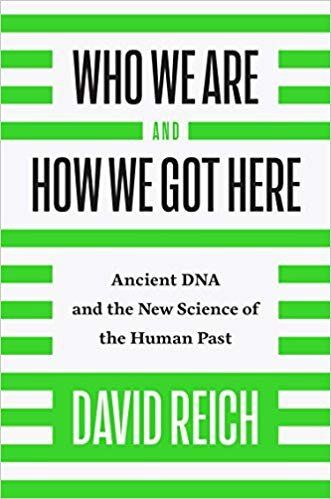Top Stories
‘She Has Her Mother's Laugh: The Powers, Perversions, and Potential of Heredity—A Review
The real problem with this book is that, to Zimmer and many other people, genetics itself is the enemy.

A review of She Has Her Mother’s Laugh: The Powers, Perversions, and Potential of Heredity by Carl Zimmer. Dutton (May 2018) 656 pages.

In this book, Carl Zimmer tries to lay out how our ideas and knowledge of genetics have developed over time, and where we are today. He mixes in discussion of the social impact of these ideas. Some of those discussions are reasonable, some are not.
He covers a very wide range of topics, from contagious cancers in clams to recent developments in genetic engineering.
Before I go any further – Zimmer is wordy. He has things to say, but he never uses one word when ten will do. The facts are always part of some long-winded human-interest story. If you like that sort of thing, you may like this book. I cannot say that I did.
The real problem with this book is that, to Zimmer and many other people, genetics itself is the enemy. The facts, not the discipline, particularly in how they apply to humans. We now know that everything is heritable, to varying degrees — and the more that life is determined or influenced by genetics, the less blank the slate, the less that can be accomplished by egalitarian social policies (or by aristocratic social policies, for that matter). The facts of genetics are caltrops on the road to a ‘just’ society. Zimmer is moderately fair-minded, usually mentioning both criticism of genetic claims and the response to that criticism — but he still gives the impression of wishing these claims had never been made and dislikes scientists who discovered unpleasant truths.
For example, he dislikes Francis Galton, and mocks him for his poor results in mathematics at Cambridge, a subject Galton really wanted to excel in. Galton hired brilliant tutors, but he just couldn’t hack math — interesting, since he later helped develop key concepts in statistics such as correlation and regression to the mean. It’s as if all the special prep in the world won’t compensate for a lack of innate talent (a commonplace observation, unless you’re Malcolm Gladwell) — but that, of course, supports Galton’s central thesis, namely, that intelligence is largely determined by hereditary factors. At this point, things have become sufficiently meta that I can’t tell whether Zimmer even knows whether he’s dissing Galton or agreeing with him.
Maybe math blindness ran in the family. Darwin, Galton’s half-cousin, said:
I have deeply regretted that I did not proceed far enough at least to understand something of the great leading principles of mathematics; for men thus endowed seem to have an extra sense. But I do not believe that I should ever have succeeded beyond a very low grade.
Another example: Zimmer talks about Cyril Burt, a British psychologist and hereditarian who did twin studies of intelligence. In particular, studies of identical twins separated early in life, a good way of testing the strength of genetic influences on intelligence and other traits. Burt claimed that heredity had a very strong influence on intelligence. He also believed that there were class differences in intelligence — that the children of barristers and boffins outscore, on average, those of navvies and knackers, partly for genetic reasons. Which is the case, of course.
Leon Kamin, then a psychologist at Princeton, detected errors in Burt’s publications and concluded that Burt’s work was fraudulent. Kamin argued that genes had zero influence on intelligence — which would suggest that dogs really can play poker. But other people (Thomas Bouchard) have done their own studies of separated identical twins and gotten the same results as Burt. It appears that Burt got old and careless, republishing earlier work. Genome-based estimates give similar results. And nobody now believes Kamin’s claim of zero heritability.
Still, in Zimmer’s view, Kamin is somehow the good guy, even though, or perhaps because, every factual claim he made was wrong. And Zimmer must know that they’re wrong.

Again: Zimmer talks about race. He might have been better off avoiding the topic entirely, because he makes not one jot or tittle of sense. His position, like the public position of many professional geneticists, is that race ‘does not exist’, whatever that means. He leans on Richard Lewontin’s ideas here, which is a mistake. As Bob Trivers says:
Lewontin would lie openly and admit to doing so. Lewontin would sometimes admit, in private at least, that some of his assertions were indeed fabrications, but he said the fight was ideological and political — they lied and so would he.
Zimmer writes: “If races were indeed biologically significant, Lewontin argued, each race should have a starkly distinctive combination of genetic variants. Most of the genetic diversity should exist between the races rather than between individuals of the same race.” That’s a correct summary of Lewontin’s argument but the argument itself is nonsense. The question is whether two groups are significantly, innately different in body or behavior, not how many genetic differences exist between them. We’re not really concerned with the number of genetic differences, but with the consequences of those differences.
If population A all experienced a change in one important nucleotide — if they all had the mutation that causes classic dwarfism — with no other change, there would be a huge difference in their bodies: they’d all be dwarves. But there would only be a tiny genetic difference (a single point mutation). Lewontin was pulling a ‘No True Scotsman’ — generating a genetic definition of race designed to win an argument, rather than one that describes reality. Zimmer falls for it, but then, he is an English major.
Look, there’s a standard quantity, the fixation index, Fst, that measures the genetic difference between two populations. Fst = 0.0 means the two populations are identical, Fst = 1.0 means they have nothing in common. For example, the genetic distance between the HapMap sample of Europeans and their African sample is 0.153.
But the genetic distance between North American wolves and coyotes is also 0.153. Am I supposed to believe that wolves and coyotes are really just the same or that the species known as canis lupis is a social construct? It’s possible for two populations with that degree of genetic differences to be profoundly different — because wolves and coyotes are profoundly different. Two populations can be very different even if they generally share the same genetic variants, as long as those variants have different frequencies. This is especially so if there is a systematic shift — for example, if most of the variants that increase height (plus variants) are more common in one group, while the minus variants have higher frequencies in the other.
In dogs, there is more within-breed genetic variation than between-breed variation: about 70% is within-breed. For humans, about 85% is within-population.
According to Lewontin’s argument, which has been pulled apart by A.W.F. Edwards and numerous others, dog breeds must not really be very different. Great Danes can’t really be very different from teacup Chihuahuas. Pit bulls can’t really have different personalities than Labrador retrievers. What do you think?
According to Lewontin, groups we call races only differ in superficial characteristics like “nose, lip and eye shapes, skin color, hair form and quantity” — and height, and disease susceptibility, the immune system, skeleton, fast-twitch muscles, cranial capacity, bone density, alcohol metabolism, fat metabolism, and so on and so on and so on.
Genetic analysis can sort people into more closely related clusters, and when this is done the highest-order clusters look pretty much like old-fashioned racial classifications — Africans, western Eurasians, East Asians, Pacific islanders, and Amerindians. Zimmer says: “But any resemblance between genetic clusters of people and racial categories concocted before genetics existed can have no deep meaning.” The hell it can’t: 19th Century scientists were observing the same reality. Nobody was sequencing avian genomes in Shakespeare’s day, yet he could still tell a hawk from a handsaw.

David Reich (who is NOT an English major) knows that the clusters that emerge from genetic analysis correspond fairly closely to old-fashioned racial classifications. He mentions Lewontin’s argument in Who We Are and How We Got Here — but as an example of obfuscation. “This carefully worded formulation is deliberately masking the possibility of substantial average differences in biological traits across populations,” he writes. On the other hand, having once been a physics major does not make you infallible: Reich and Zimmer both say a real race has to be very old. It doesn’t count if it was created by admixture of earlier populations several thousand years ago. So since they are the result of a mix of Anatolian-origin farmers and Indo-European pastoralists about five thousand years, Europeans cannot be a real ‘race’. So Mexicans, ‘la raza’, are imaginary, like elves and Eskimos. While German Shepherds, created in 1899, are just a bad dream — albeit a dream with teeth.
Some other reviews have neglected to mention Zimmer’s embrace of complete nonsense on a number of questions about human genetic variation — it’s common nonsense, politically correct and (really) politically required nonsense. The New York Times is the Alamut of political correctness: if you don’t smoke the dope, out you go.
This book is up-to-date and covers a very wide range of topics in a low-intensity way. Most readers will learn a lot. Carl Zimmer deserves some thanks for a decent account of scientific progress in a field that he evidently finds deeply disquieting.






